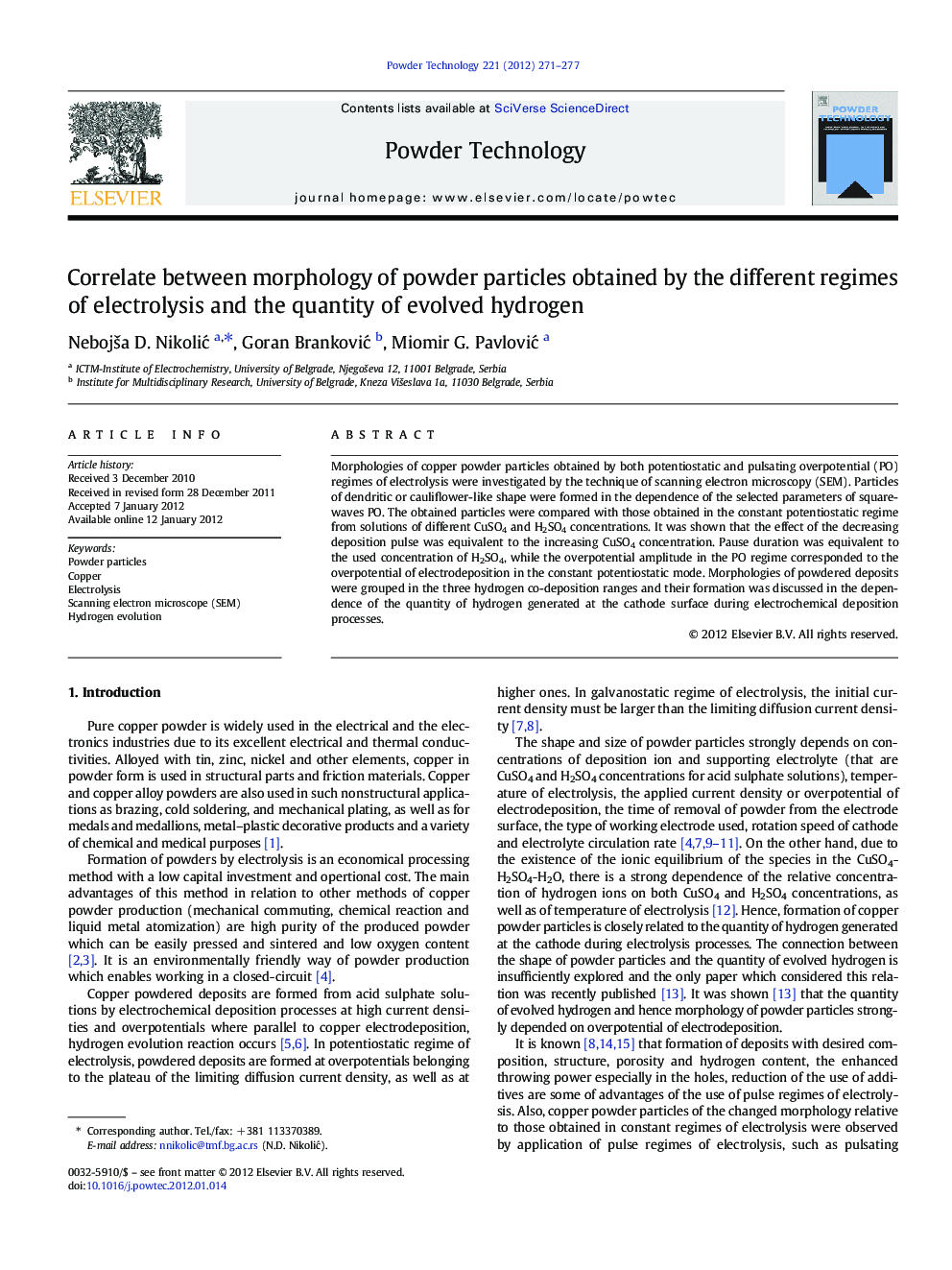| Article ID | Journal | Published Year | Pages | File Type |
|---|---|---|---|---|
| 237239 | Powder Technology | 2012 | 7 Pages |
Morphologies of copper powder particles obtained by both potentiostatic and pulsating overpotential (PO) regimes of electrolysis were investigated by the technique of scanning electron microscopy (SEM). Particles of dendritic or cauliflower-like shape were formed in the dependence of the selected parameters of square-waves PO. The obtained particles were compared with those obtained in the constant potentiostatic regime from solutions of different CuSO4 and H2SO4 concentrations. It was shown that the effect of the decreasing deposition pulse was equivalent to the increasing CuSO4 concentration. Pause duration was equivalent to the used concentration of H2SO4, while the overpotential amplitude in the PO regime corresponded to the overpotential of electrodeposition in the constant potentiostatic mode. Morphologies of powdered deposits were grouped in the three hydrogen co-deposition ranges and their formation was discussed in the dependence of the quantity of hydrogen generated at the cathode surface during electrochemical deposition processes.
Graphical abstractThe selected parameters of pulsating overpotential (PO) regime strongly affected hydrogen evolution and hence morphology of powder particles. Dendritic particles (Particle I) or cauliflower-like ones (Particle II) are formed in dependence of parameters of the PO regime. Effect of the decreasing deposition pulse was equivalent to the increasing CuSO4 concentration.Figure optionsDownload full-size imageDownload as PowerPoint slideHighlights► Strong effect of pulsating overpotential regime on morphology of powder particles ► Effect of decreasing deposition pulse corresponds to increasing CuSO4 concentration ► Correlate between shape of powder particles and the quantity of evolved hydrogen.
